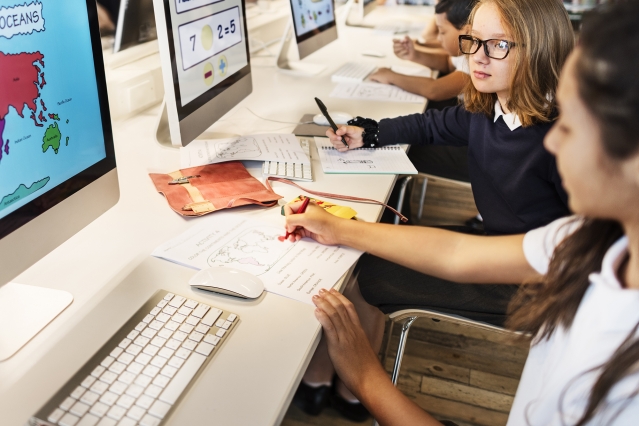If you’re reading this I’m pretty sure that I don’t have to tell you that we have a growing problem with our education system. There is a problem, but the first step to solving any problem is recognizing there is one; so we’re on the right track, right? The New Media Consortium also recognizes this and has put together "The NMC Horizon Report: 2013 K-12 Edition,” in hopes to identify problems with our approach to education technology. Below are the key issues they hope to have addressed.

Six Steps to Overhaul
1. Professional Development:
There is a lack of sufficient, continuing professional development for teachers who have to integrate new technologies into their classrooms but are unable due to a lack of preparedness or understanding of these technologies.
2. Resistance to Change:
There is a “comfort with the status quo” which results in teachers and school leaders believing that learning about new technologies is outside of their job description.
3. MOOCs and Other New Models for Schooling:
Massive Open Online Courses (MOOCs) are the new kids on the education block so to speak, and are encouraged as many higher education institutions have already embraced MOOCs and seen success. K-12 schools should be looking for ways to integrate this idea to make education more accessible.
4. Delivering informal learning:
Much like number three above, lecture-and-test models of learning fail to challenge students to practice ortake on informal learning. Informal learning is found more often in non-traditional classroom settings like flipped classrooms, which provide a combination of formal and informal learning and have much more non-traditional approach that embraces multimedia into its standard curriculum.
5. Failures of Personalized Learning:
There is a gap between the idea of differentiated personalized instruction and the technologies available to make it happen. Even though K-12 teachers see the need for personalized learning, theydon’t have the tools or time available to make it happen.
6. Failure to use technology to deliver effective formative assessments:
Although testing has always been an important driver for educational practice and change, many teachers now “teach for the test.” The curricula and skill sets have adapted to our society’s needs, and in turn current testing methods have become an antiquated assessment. New technologies and our understanding of different learning patterns needs to play into the new way students are scored for the understanding of the topic.
Despite increasing adoption of technologies for K-12, there seems to be a problem with widespread implementation. Older teachers seem to lack an understanding of how new technology works. This lack of an understanding is exasperated when an older teacher is trying to teach a student who grew up using that technology. We’ve all seen YouTube videos of toddlers using an iPad, we’ve also watched our grandparents struggle to understand what an iPad is, or what it can do.
Older teachers also struggle with this sort of thing and that’s when the problem with implementation comes up. Every parent wants their kid to be successful and have a better life than they did. Embracing new educational technologies is one way to do this.
Because no one wants their kid to go from this....

… to a life of this…

Teachers need to be confident using new technologies to teach “old” concepts and more importantly how they apply to today’s world. Through the proposed six steps addressed in NMC’s report, US students could potentially raise their education level to the standards of the rest of the industrialized world.
Discover more ways to embrace new educational technologies with RobotLAB!
Check our 2019 product Catalog and find different tools and resources for your classroom!
Download 2022 Product Catalog Now
